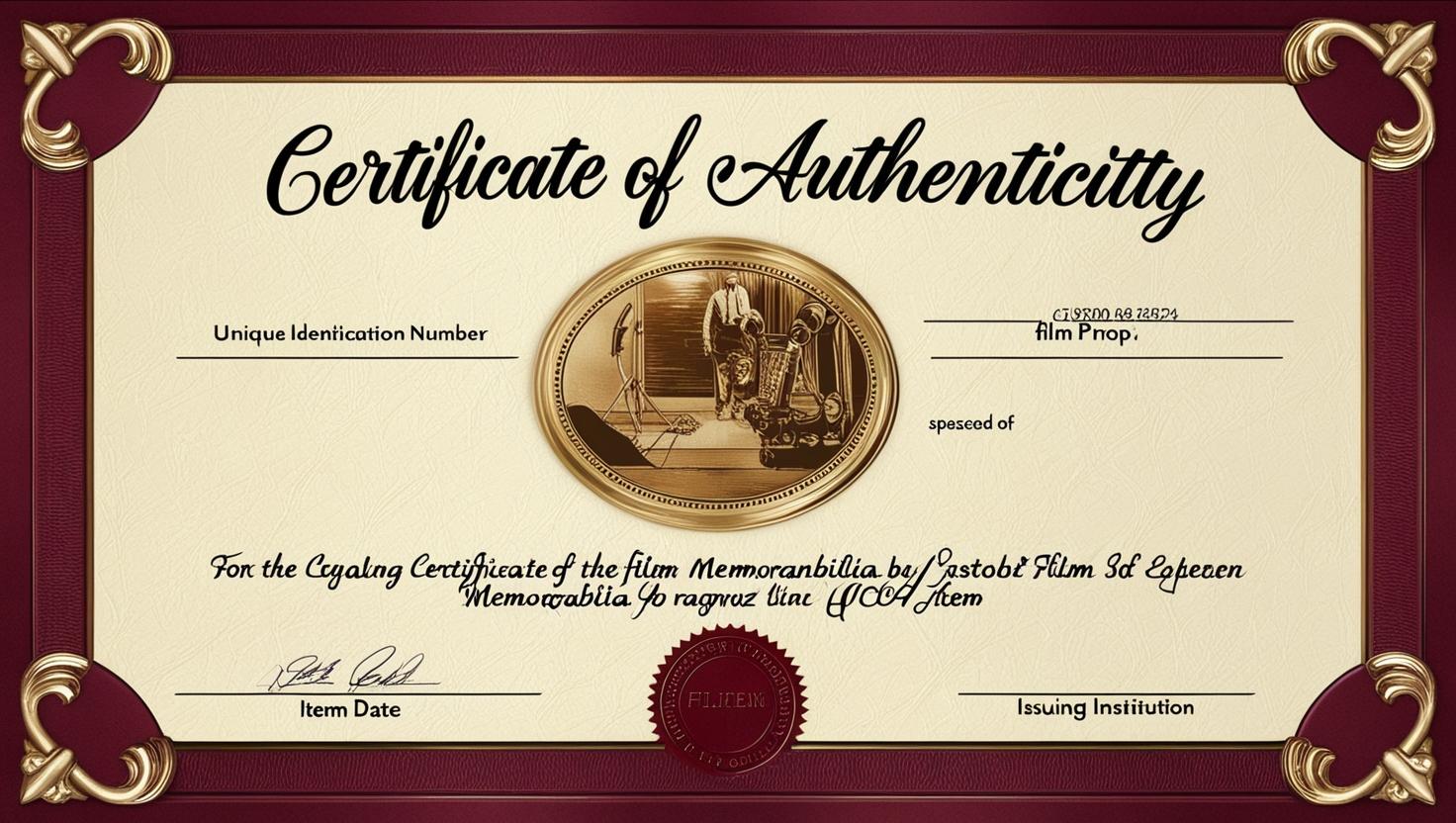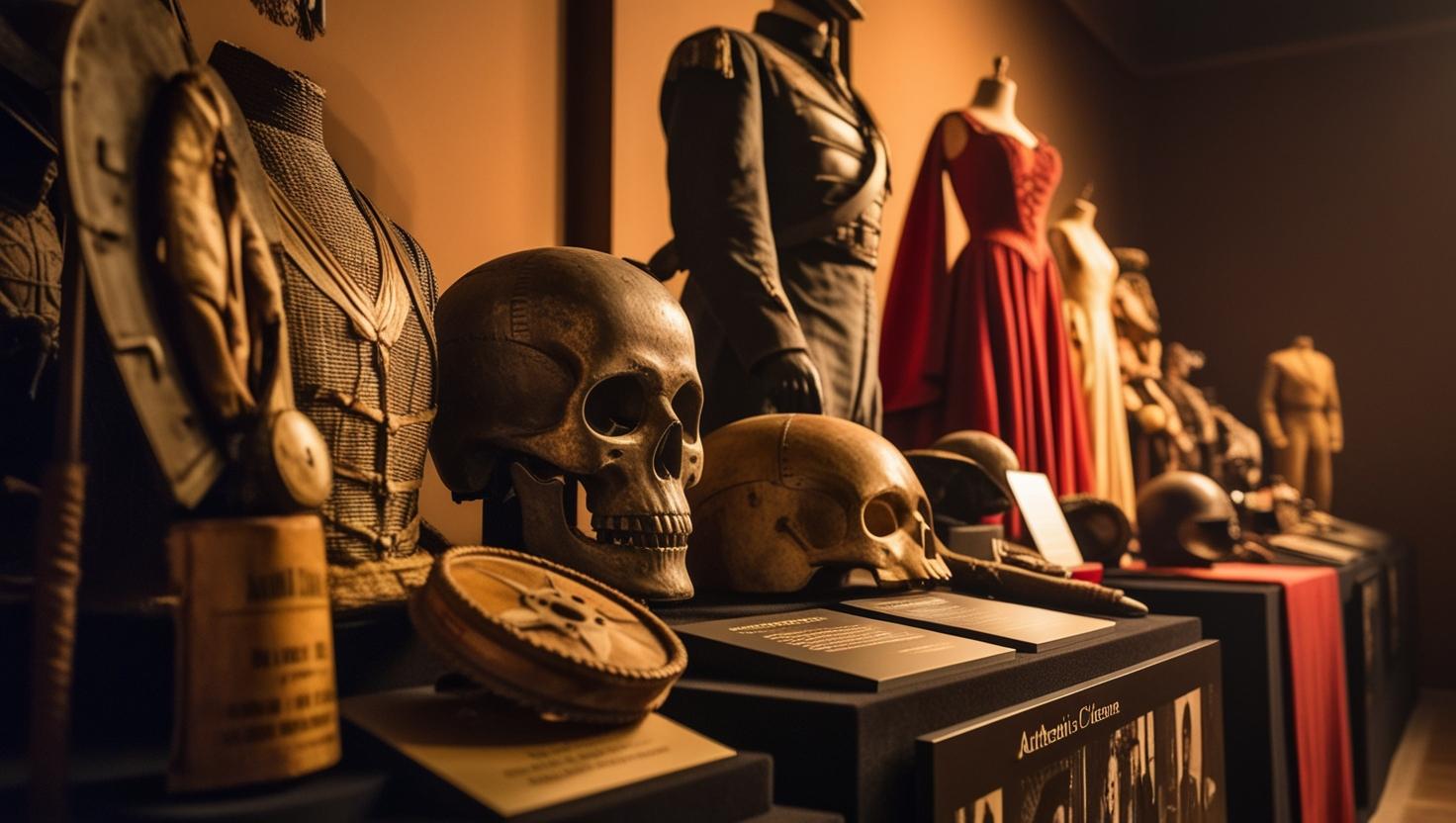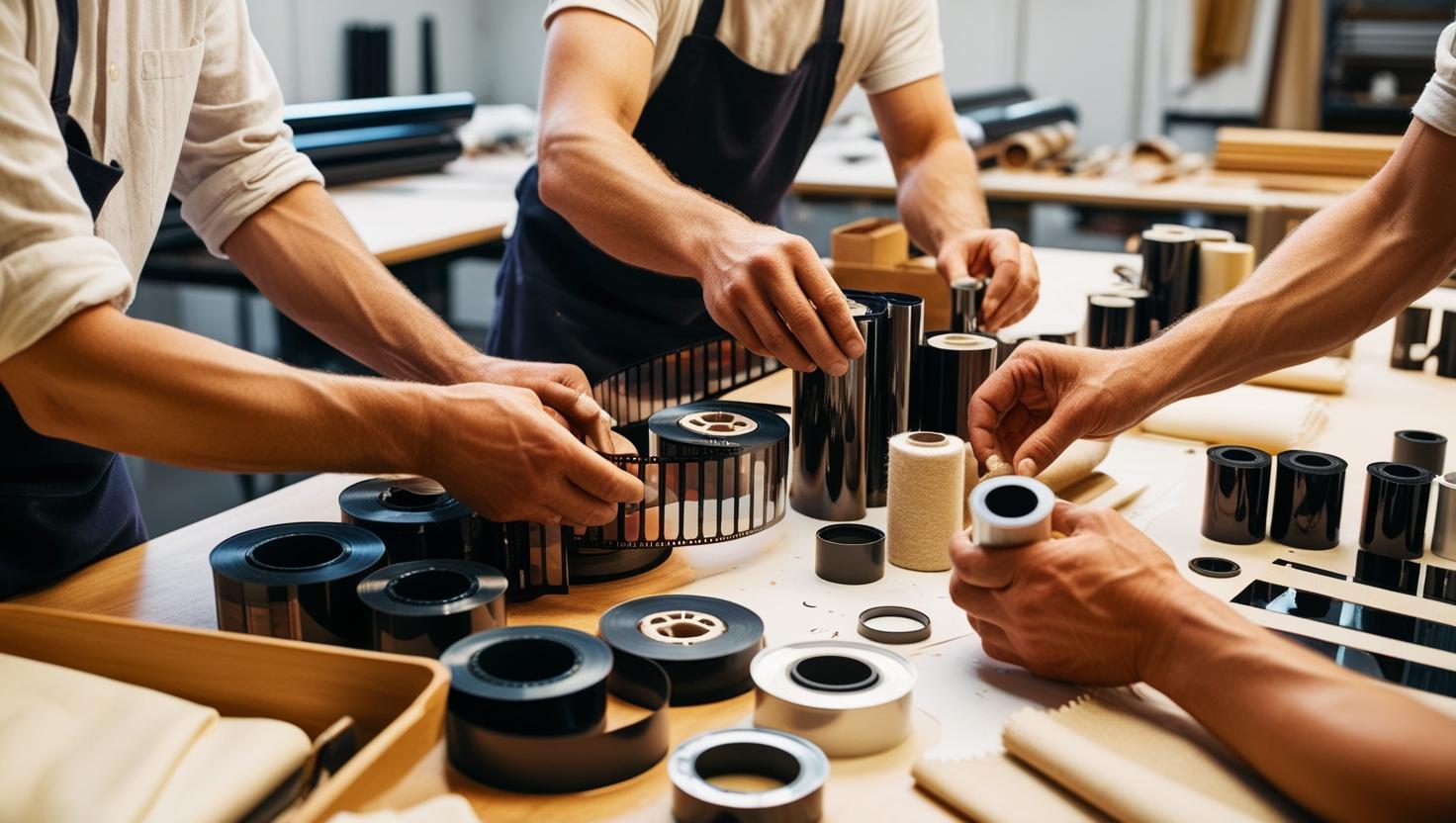The captivating realm of film memorabilia collection represents a distinctive convergence of cinematic heritage, collector enthusiasm, and investment opportunity. For enthusiasts pursuing authentic artifacts from cherished films, proper certification and authentication function as vital safeguards against misrepresentation and fraudulent items. The certification process delivers crucial documentation that helps establish an item's authenticity, background, and significance within the collecting community. Understanding these verification mechanisms empowers both emerging and seasoned collectors to make knowledgeable decisions when acquiring pieces that connect them to film history.
What Is a Certificate of Authenticity (COA)?
A Certificate of Authenticity, commonly referenced as COA, functions as the fundamental documentation supporting legitimacy claims for film memorabilia. These certificates typically provide comprehensive information about the item, including its source, production context, ownership lineage, and verification methodologies employed to confirm its genuineness. Well-executed COAs often incorporate specific identifying attributes of the item, such as distinctive markings, studio inventory designations, or characteristic features that differentiate it from reproductions or comparable pieces.
Properly formulated COAs should carry official endorsements from authorized individuals qualified to verify the item's authenticity, such as studio representatives, production personnel, acknowledged experts, or sanctioned auction authorities. These documents frequently incorporate security elements designed to deter forgery, which may include holographic impressions, embossed markings, watermarked materials, or additional protective features that reinforce their credibility. Nevertheless, the caliber and dependability of COAs vary substantially across the marketplace, with some offering exhaustive verification details while others provide merely cursory assurances.
The most valuable COAs establish definitive connections between the item and its screen utilization or production background, often including supplementary evidence such as production imagery showing the item in use, studio inventory documentation, or statements from individuals directly involved with the film. However, even the most professional-appearing certificate holds limited significance if issued by an unreliable source, making it essential for collectors to comprehend not just what these documents contain but also who substantiates their claims. A certificate's ultimate merit derives from the standing and authority of its issuer rather than merely its visual presentation.
Who Issues COAs and How Are They Verified?
Film studios constitute the most authoritative sources for memorabilia authentication, as they maintain firsthand knowledge of items created for their productions. Studio-issued certificates typically originate from asset management divisions or archival departments responsible for monitoring and administering production materials. These certificates command substantial respect in the collecting community due to their direct connection to the production source. Nonetheless, studio documentation practices vary considerably, with some maintaining meticulous records while others follow less stringent protocols, particularly for older productions when preservation standards were less sophisticated.
Major auction establishments specializing in entertainment memorabilia have developed their own authentication systems that combine expert assessment, provenance investigation, and frequently consultation with production professionals. Esteemed organizations such as Prop Store, Heritage Auctions, or Julien's employ specialists with extensive industry insight who examine physical characteristics, materials, fabrication techniques, and production markings to verify authenticity. The certificates issued by these entities generally command respect within the collecting community, yet the thoroughness of their verification approaches may differ based on the particular establishment and the specific memorabilia category.
Independent authentication specialists also provide certification services, contributing specialized knowledge of certain productions, studios, or memorabilia categories. These experts often include former studio employees, production team members, or dedicated collectors who have cultivated profound expertise in recognizing authentic items. The significance of their certificates depends considerably on their professional reputation and documented experience within the industry. While some independent experts maintain exceptional standards and provide detailed analysis, others may lack the resources or connections to conduct comprehensive investigations, potentially resulting in less reliable certifications.
Trusted Certification Bodies and Studios
Several organizations have distinguished themselves as industry leaders in memorabilia authentication through consistent application of exacting standards and transparent verification procedures. These respected certification entities typically employ multiple authentication strategies, often combining physical examination, comparative analysis, provenance research, and consultation with production experts. Their holistic approach helps establish greater confidence in the items they certify, though no authentication system can claim absolute infallibility given the sophisticated techniques employed by certain counterfeiters.
Prominent Hollywood studios that actively manage their memorabilia legacies generally maintain internal authentication programs overseen by archivists familiar with their production history. Studio authentication tends to be most reliable for relatively recent productions where comprehensive records exist, but can prove more challenging for older films with fragmentary documentation. Some studios have established partnerships with third-party specialists to administer their memorabilia authentication programs, combining studio archives with external expertise. This collaborative approach often yields more thorough verifications than either party could provide independently.
Authentication technologies continue to evolve alongside forgery techniques, with some certification bodies now incorporating advanced methodologies such as material dating, microscopic examination, or specialized imaging to document distinctive characteristics. These technological approaches complement traditional authentication methods based on production knowledge and historical investigation. The most trusted certification sources typically explain their verification methodology transparently, helping collectors understand the foundation for their authenticity determinations rather than expecting unquestioning acceptance of their authority. This openness represents a hallmark of reputable authentication providers committed to upholding rigorous standards within the memorabilia community.
Red Flags and Fake Documentation
Counterfeit certificates constitute a persistent challenge in the memorabilia marketplace, often featuring impressive visual elements designed to convey legitimacy while lacking substantive verification. Warning indicators of potentially fraudulent documentation include ambiguous descriptions that could apply to numerous similar items, absence of specific identifying attributes unique to the piece, missing contact information for the issuer, or certificates from entities with limited history or questionable standing. Sophisticated forgeries may incorporate official-looking endorsements or signatures, yet fail to provide verifiable connections to authorized sources with genuine knowledge of the production.
Generic certificates lacking item-specific details warrant particular scrutiny, as legitimate authentication typically addresses the unique characteristics of each piece rather than relying on standardized language. Certificates containing factual inaccuracies about the production, incorrect dates, misspelled names, or imprecise terminology regarding filming processes suggest either negligence or lack of genuine expertise. Furthermore, documentation claiming certainty about aspects that would be difficult to verify conclusively, such as precise screen timestamps for background items visible only momentarily, often signals exaggerated claims rather than methodical research.
Recognized patterns of suspicious certification practices include newly established entities suddenly offering authentication for valuable vintage memorabilia without explaining their verification methodology, certificates from organizations that decline to disclose their authentication specialists or their qualifications, or documentation from sources with known connections to problematic memorabilia transactions. The memorabilia community generally maintains awareness of questionable certification sources, with experienced collectors sharing information about dubious practices. Nevertheless, novice collectors may remain vulnerable to impressive-looking but ultimately unreliable documentation if they have not yet developed familiarity with industry benchmarks and reputable sources.
The Role of Provenance in Value
Provenance—the documented chronicle of an item's ownership and transmission—often proves even more significant than certification alone in establishing memorabilia authenticity. Compelling provenance creates an uninterrupted chain connecting the item directly back to its production source, ideally including documentation of its original studio release, transfers between custodians, and public appearances in exhibitions or publications. This ownership timeline provides context that enhances both the historical significance and market value of memorabilia beyond what certification alone can establish.
Auction records constitute particularly valuable provenance components, as reputable auction establishments typically perform due diligence before accepting items for sale. Documentation from recognized auctions provides independent verification separate from seller assertions, creating additional confidence for potential buyers. Similarly, inclusion in museum presentations, published reference materials, or studio-sanctioned retrospectives contributes meaningful provenance elements that reinforce authenticity claims. Nevertheless, the quality of these provenance components varies substantially based on the thoroughness of each organization's verification procedures.
The most persuasive provenance combines multiple independent confirmation sources rather than relying on a single authentication point. When studio records, auction history, publication features, and expert testimonials all consistently identify the same item, collectors gain significantly greater confidence in its authenticity than certification alone could provide. Nevertheless, even substantial provenance cannot absolutely guarantee authenticity in every instance, as documentation itself may contain errors or omissions. The most discerning collectors therefore develop multifaceted evaluation approaches that consider physical characteristics, production context, and documentation quality rather than relying exclusively on certificates or ownership history.





Leave a comment
This site is protected by hCaptcha and the hCaptcha Privacy Policy and Terms of Service apply.